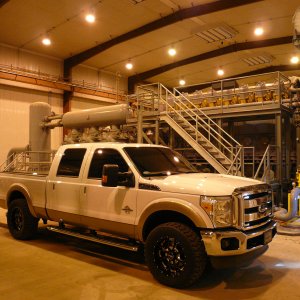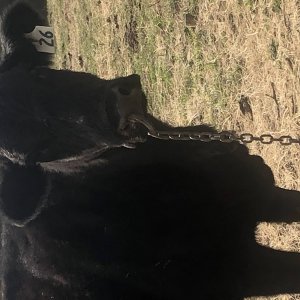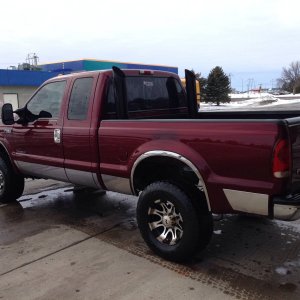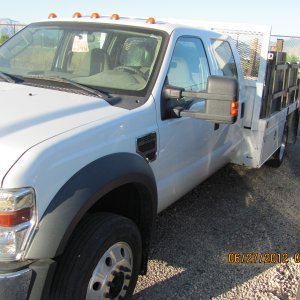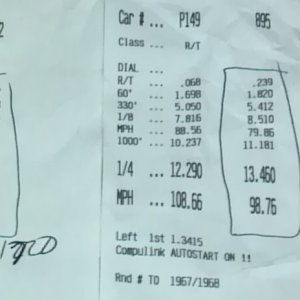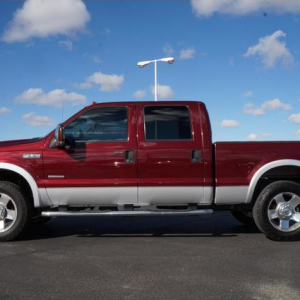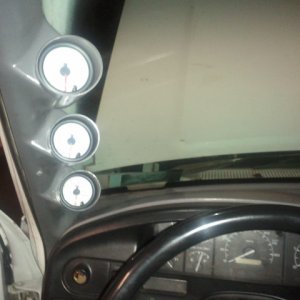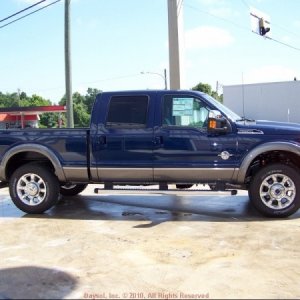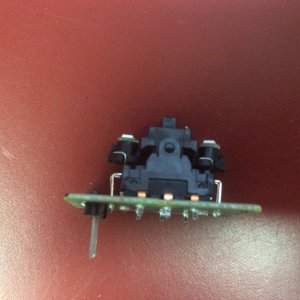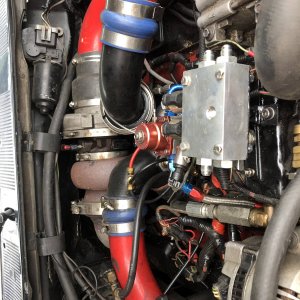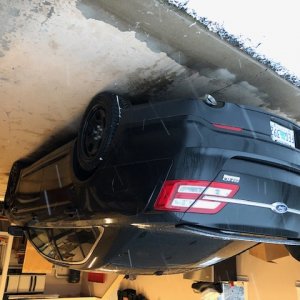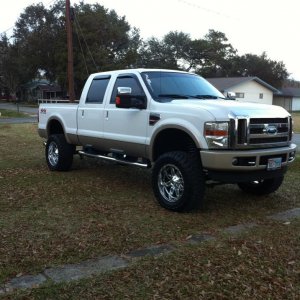You are using an out of date browser. It may not display this or other websites correctly.
You should upgrade or use an alternative browser.
You should upgrade or use an alternative browser.
Pitted cylinders
- Thread starter pechroc1
- Start date
Thats precisely what i was thinking. i like the angle of the cut.This is what I am talking about. For the head bolt I would do six of those notches.
Powerstroke Cowboy
Well-known member
It works for me. You play around with the notches nd angle of then cut. But I figured as long as its able to clean out and collect the junk on the threads, it's good enough.Thats precisely what i was thinking. i like the angle of the cut.
It's also cheaper than buying a tap.
Arisley
Moderator
You are putting new cam bearings in, right.
Last edited:
of course!!!You are putting new cam bearings in, right.
SO.... that cylinder was real eating at me and im having it sleeved.
now i know im nuts... but i plan on keeping the truck forever.
does anyone think there would be a benefit to putting a river city stage one cam in it??? has anyone used these? are cons to using it? or should i find elsewhere to spend it.
FYI the build already has 238/80's, 38r,dual stock fuel, t-500 hpop, built 4r100 with a JW valve body.
psduser1
Well-known member
Only if you're willing to do the associated headwork....
Cons- expensive with minimal gains. Like, 20-30 hp gains, without head porting.
Cons- expensive with minimal gains. Like, 20-30 hp gains, without head porting.
Garbage_Mechanic
Member
I totally get the point of saving the cost of boring and pistons. Over the years I have assembled some engines with less than ideal cylinders. Most did ok, a few didn’t.
Here are a few things I’d think about:
If none of the “pits” were deep enough to catch a pick in, they were just stains and not a concern.
Ball hones follow the existing surface but don’t correct or show you low spots, taper or out of round. May not be an issue but I like to use a dial bore gauge to check. Good machine shop will have one and check for you.
Here are a few things I’d think about:
If none of the “pits” were deep enough to catch a pick in, they were just stains and not a concern.
Ball hones follow the existing surface but don’t correct or show you low spots, taper or out of round. May not be an issue but I like to use a dial bore gauge to check. Good machine shop will have one and check for you.
Garbage_Mechanic
Member
There is a spec for surface finish put out by the engine or ring manufacturer. It is usually in RMS. Flex Hone’s website will tell you how to get that finish without guessing.
Garbage_Mechanic
Member
Next thing I would consider is piston to cyl clearance. A little is worn from the cyls, a little is honed and the pistons are worn a little. Worthwhile to measure because if you are past the limit piston rock from loose clearance will cause the rings to “flutter” and pass oil. Turbocharged diesels are forgiving of poor ring seal under boost. But low speed running and idling will allow oil to pass.
Garbage_Mechanic
Member
Next is the piston ring grooves. Top rings are keystone (tapered) design and have steel ring grooves in the piston. Still good practice to clean ring grooves good and look for step wear on the bottom side of the groove. Look at old rings for step wear on the side. Check #2 ring grooves too. Oil ring grooves typically don’t wear.
Lastly inspect the sharp corner where the piston top meets the combustion bowl. 7.3 pistons occasionally crack here.
Lastly inspect the sharp corner where the piston top meets the combustion bowl. 7.3 pistons occasionally crack here.
Garbage_Mechanic
Member
Wrist pin bushings in the rods should be checked at least visually and by feel. Original clearance is less than one thousandth .001 .Feel wise this means unless the oil has been washed out you should not “feel” clearance. You should only be able to see the oil film move but not any play.
Garbage_Mechanic
Member
On the cam bearings, they are brass not Babbitt so more than likely they are not worn. Measure them. I see more installation screwups than worn cam bearings. On the cam the mark you were worried about on the journal is corrosion from moisture in the oil passage. If the lobes show no fretting or pitting it’s fine. The ones in the pic are ok. No need to hot tank the block unless it is full of sludge or really bad rust in water jackets. The freeze plugs that are in there are stainless steel. No need to change them. Again see more installation problems than old freeze plug problems. Cleaning the hone grit from cyl walls is critical. Wash with soap and white lint free cloth until no more black comes off on fresh cloth. Then immediately oil.
Garbage_Mechanic
Member
Not saying you should or should not re ring as opposed to bore it. Just giving the tools to know it’s right rather than guess, hope or rely on internet experts. None of us giving advice can see every critical surface. You have to check them all. 10 years of building engines and 30 years of directing mechanics to make the right choices in everything from Briggs and Stratton the Detroit Diesel to D8 Cats in company fleets where you live with your choices for the next 12,000 hours led me to these hopefully helpful comments. Let us know how it turns out.
Garbage_Mechanic
Member
Just thought of another thing. I have never been successful sleeving a cylinder without boring the rest. The press fit of the sleeve pushes the adjacent cylinder(s) out of round. Beyond what can be corrected by honing. So if you have to sleeve a cylinder the process is to fit the new sleeve then bore all the cylinders including the sleeved one.
Hmmm. So being this is the end cylinder wouldn't it just effect the adjacent cylinder.Just thought of another thing. I have never been successful sleeving a cylinder without boring the rest. The press fit of the sleeve pushes the adjacent cylinder(s) out of round. Beyond what can be corrected by honing. So if you have to sleeve a cylinder the process is to fit the new sleeve then bore all the cylinders including the sleeved one.
I guess we'll just have to mic it after the sleeve is inserted.



